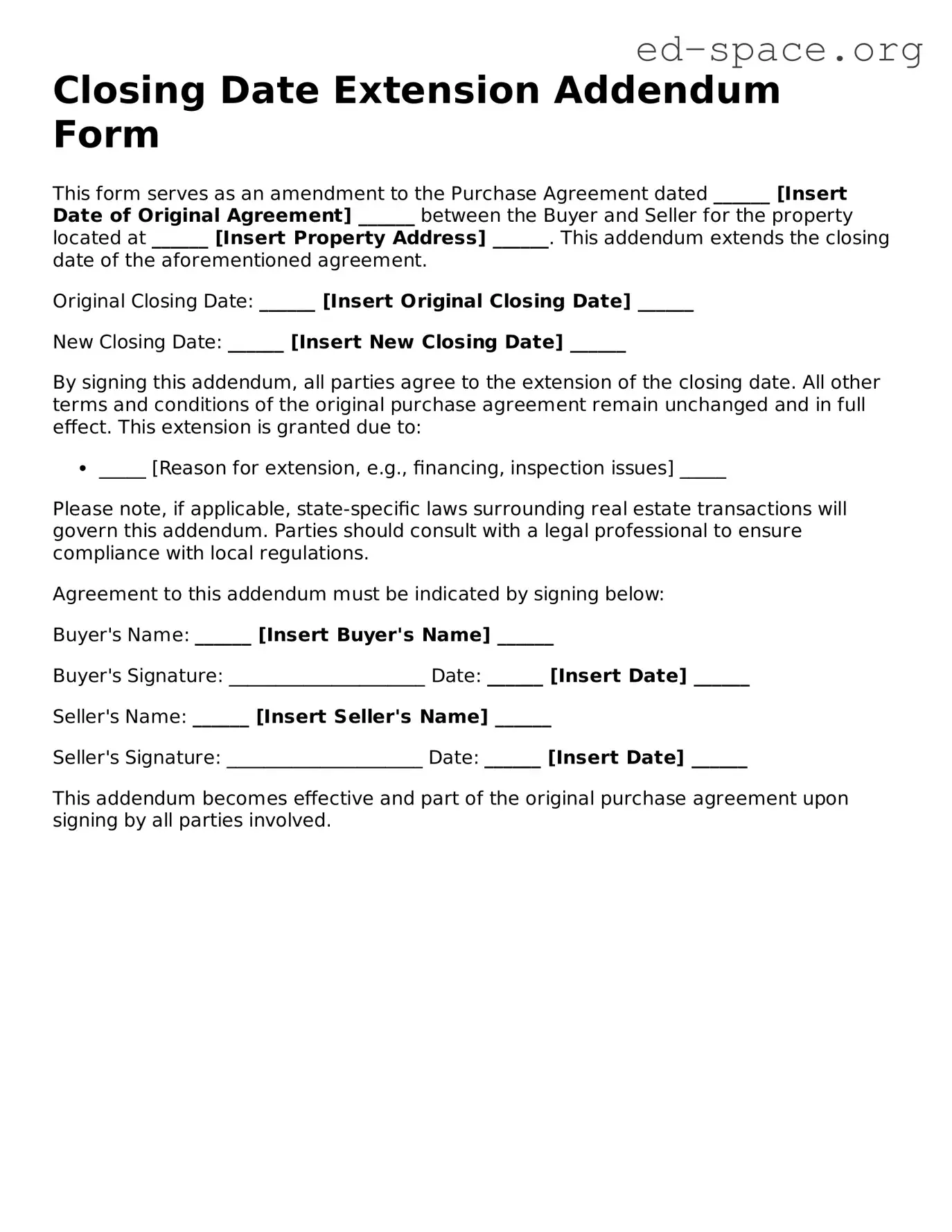What is a Closing Date Extension Addendum Form?
A Closing Date Extension Addendum Form is a legal document used to modify the original closing date set in a real estate purchase agreement. It is an agreement between the buyer and seller to extend the closing date to a new specified time. This form is necessary when both parties agree that they need more time to complete the requirements for a property sale.
When might I need to use this form?
You might need to use this form if unforeseen circumstances arise that prevent either the buyer, the seller, or both from closing on the property by the original date agreed upon. Examples include delays in obtaining financing, issues discovered during the home inspection that need to be resolved, or delays in completing necessary paperwork.
How does this form change the original purchase agreement?
This form amends the original purchase agreement by setting a new closing date. Other terms of the purchase agreement remain unchanged unless specifically altered by this or another addendum. The focus of this form is solely to agree upon a new date by which the closing must occur.
What information is needed to complete this form?
To complete this form, you will need the original purchase agreement date, the proposed new closing date, and the signatures of both the buyer and seller. Additionally, any relevant details about why the extension is necessary may also be included to clarify the situation.
Do both the buyer and the seller need to agree to the new closing date?
Yes, both parties must agree to the new closing date for the extension to be valid. This form serves as a mutual agreement and must be signed by both the buyer and the seller to be legally binding.
Is the Closing Date Extension Addendum Form legally binding?
Once signed by both parties, the Closing Date Extension Addendum Form becomes a legally binding document that alters the terms of the original purchase agreement. It is important that the form is completed accurately and that both parties fully understand the implications of the extension.
Can more than one extension be granted?
Yes, if necessary, more than one extension can be granted. However, each extension must be documented with a new addendum form, and all parties must agree and sign each time an extension is made.
What happens if we cannot agree on a new closing date?
If the buyer and seller cannot agree on a new closing date, the sale may be jeopardized. It's crucial to negotiate and try to find a mutually acceptable solution. If an agreement cannot be reached, it might be necessary to consult with a legal advisor to understand the options and implications based on the original purchase agreement.
Where can I find a Closing Date Extension Addendum Form?
This form can usually be obtained from real estate agents, legal document providers, or online legal forms libraries. It's important to ensure that the form used is compliant with the laws of the state where the property is located.
